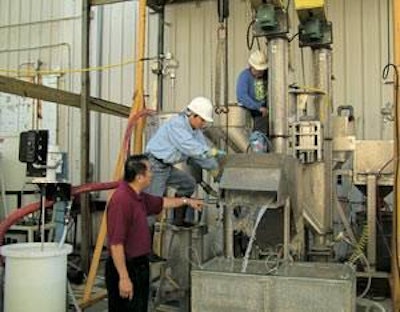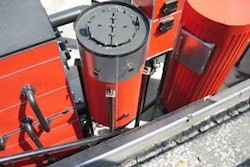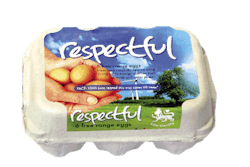
In these environment-conscious days, all industries have to take a hard look at both their use of resources and the amount of waste produced. No longer can by-products be dumped free of charge at a landfill site. Instead, waste management and recycling are key processes that are occupying researchers around the world. What was previously regarded as waste is being broken down into its components, many of which are proving to be valuable resources.
A team at Georgia Tech Research Institute (GTRI) in the USA, for example, has successfully developed a novel separation technology and built a pilot-scale separation facility to recover calcium carbonate from eggshells for commercial use. The project, now nearing its conclusion, has focussed on finding alternative uses for eggshells. In the state of Georgia alone, more than 81,000 tonnes of eggshells are sent to landfill sites each year.
Project director, Jeffery Hsieh, explained, "We are seeking an environmentally better solution to disposing of eggshells by recovering the calcium carbonate and membrane from the eggshell waste and using them in some other applications."
Obtaining calcium carbonate from the eggshells not only frees up landfill capacity but it is also a sustainable, partial substitute for mined calcium carbonate. This material has a range of applications in the manufacture of paper and plastics. Among other uses, calcium carbonate can be used as a component in ink jet paper coatings or compounded into plastics to reduce the use of petroleum-based products.
GTRI researchers have been working with an industrial partner on the project, constructing a pilot-scale separation facility at the egg processing plant belonging to American Dehydrated Foods (ADF). The pilot-scale system can process around 230kg of eggshells per day enough to test the calcium carbonate produced thoroughly, as well as to evaluate the system's design under actual process conditions.
How does it work?
Dr Hsieh explained that the pilot unit comprises a series of washing stations, which agitate the eggshells severely. This separates the membrane from the calcium carbonate fraction. The eggshells are ground and then fed through the system against the flow of water. This counter-current path helps to separate the membrane from the calcium carbonate. The lighter membrane floats out, while the calcium carbonate sinks to the bottom.
Separation of the fractions
The recovered calcium carbonate has been the main focus of recent research. The end-product must be free of biological activity, which means that as much membrane is removed as possible, or the grinding of the calcium carbonate is impaired. Dr Hsieh explained that the research team has been able to make a clean calcium carbonate with little membrane but that work continues to reduce it further.
"We have shown that the amount of membrane can be reduced to slightly below a 2% level with only mechanical separation," said Dr Hsieh.
Three different approaches to further reduce the membrane are being evaluated. For the first option, the team is examining the energy required to grind the current semi-purified product so that it could be used along with conventional calcium carbonate. The other options aim to produce a purer material by chemical means, either to extract the membrane or to recover the calcium carbonate as calcium oxide and then possibly convert it back into calcium carbonate in a subsequent step if a completely pure product is required.
"This is technically a feasible approach but it adds extra cost and complexity to the programme," noted Dr Hsieh.
Collaboration from other industries
There is a great deal of interest in industrial collaboration, and four other partners have joined the research team. EvCo Research, a supplier of coating and wet end treatment chemicals to the paper industry, is interested in using the calcium carbonate in its ink jet coating products and is spearheading commercialisation efforts with the other partners. Imerys is a Georgia-based mineral company looking to process the calcium carbonate with a range of applications in mind. Local plastics manufacturer, Heritage Plastics, is testing the recovered calcium carbonate in place of conventional calcium carbonate in plastics. The final partner is a package supplier to the fast-food industry that has expressed interest in using the plastics processed by Heritage.
Dr Hsieh is optimistic, commenting, "The successful conclusion of the project will provide the poultry industry with an environmentally better solution than landfill for eggshells. In addition, the calcium carbonate will be used to replace petroleum-based plastics, reducing dependence on oil feedstocks."
Georgia Tech Research Institute
This article is based on one published in PoultryTech, which is published by the Agricultural Technology Research Program (ATRP), Food Processing Technology Division of the Georgia Tech Research Institute (GTRI). ATRP is conducted in co-operation with the Georgia Poultry Federation with funding from the Georgia Legislature, USA.
















